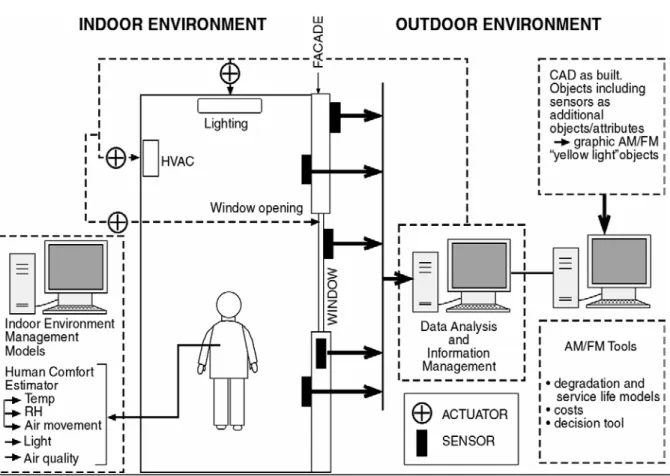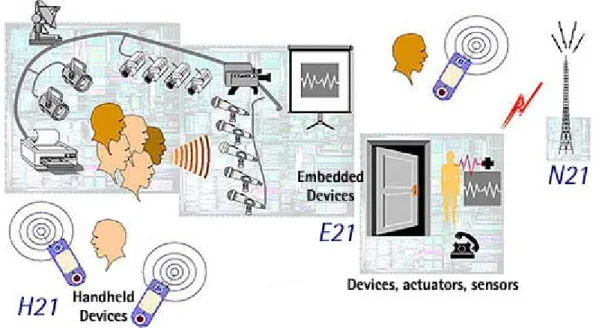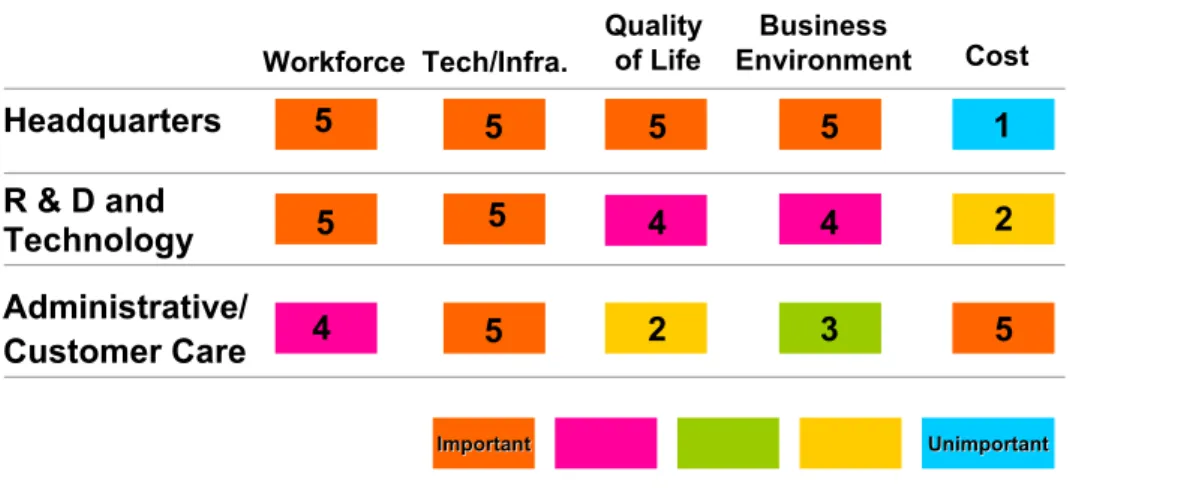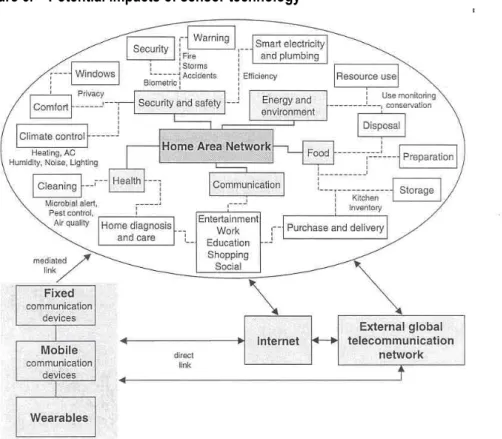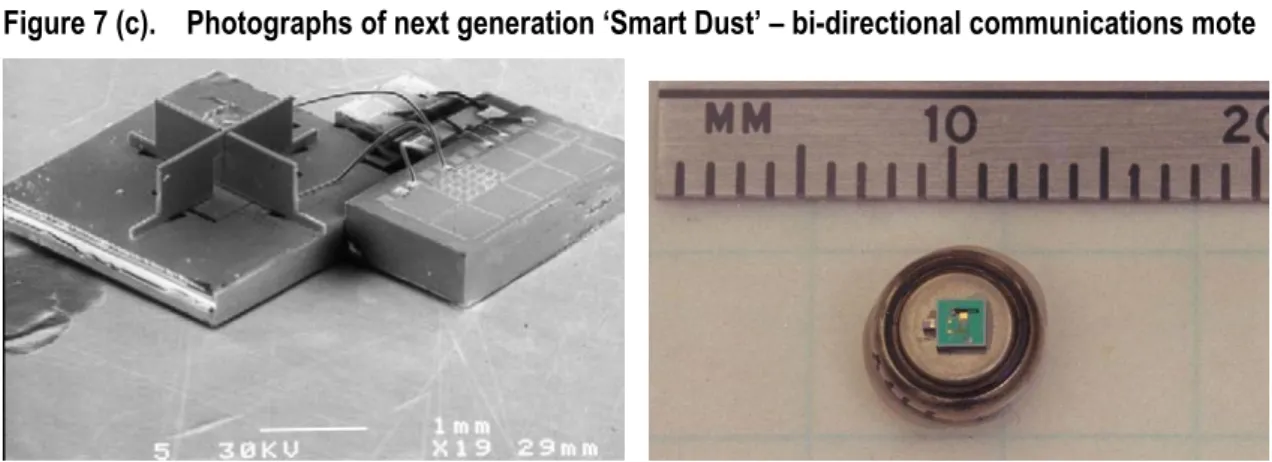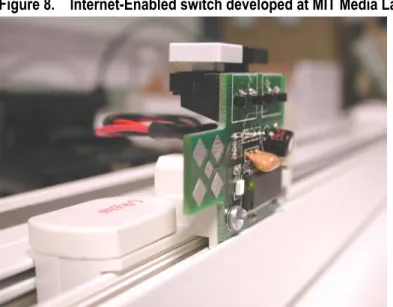The Client uses this report or any information provided by the Collaborative Research Center for Construction Innovation in connection with the Consulting Services at its own risk. Construction Innovation expressly disclaims any responsibility or liability to any person in respect of anything done or omitted to be done by any person in reliance on this Report or any information provided.
PREFACE
EXECUTIVE SUMMARY
This model requires that the use of building services can be tracked and billed to individual tenants or groups of building users. According to the proposed system, this is feasible, as the measurements needed to optimize IEQ and energy efficiency can also be used to derive energy consumption at the micro-area level.
INTRODUCTION
- Background
- Project Objectives
- What is a ‘Smart Building’
- Report Outline
- Structure
- Literature Review
First, an overview of current practice in building control systems and associated technology is given in Section 4. Then in Section 5, some of the key drivers and issues related to smart buildings are discussed.
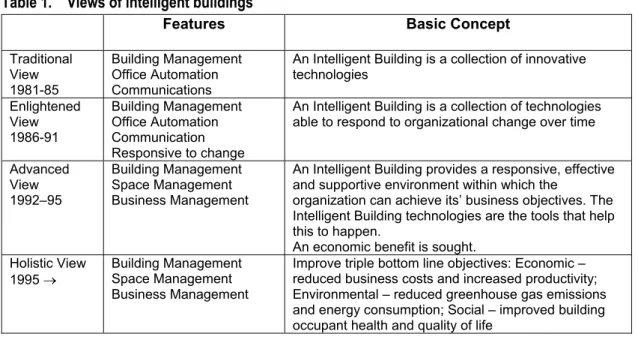
OFFICE BULDING TECHNOLOGY – CURRENT PRACTICE
- Brief History of Building Control Systems
- Current Building Control Technologies
- Systems Integration and Interfacing
- Typical System Configuration
- Industry Standards and Compatibility
- Primary Building Management
- Building Management Reporting
- Energy Management
- Building Control Systems and the ‘Triple Bottom Line’
¾ Video surveillance and recording systems – due to public liability issues and the increased need for security recording, and with the introduction of digital video recording (replacing older, high-maintenance, VCR-based systems), this is now a significant area of expenditure. New buildings built within existing built-up areas generally have minimal consideration of the environment in the design of control systems.
DRIVERS, TRENDS & IMPORTANT ISSUES
- Sustainable Development
- Architectural Design and Technology in Smart Buildings
- Business Trends
- Security Concerns
- Worker Health and Productivity
- De-Regulation
- Different Stakeholder Perspectives
- Out-sourcing of Building Services
- Trade-off Between Indoor Environment Quality and Energy Use
A less obvious ramification of increased safety concerns is in the design and operation of HVAC systems. The introduction of outside air is likely to improve (or in some cases worsen) indoor air quality.
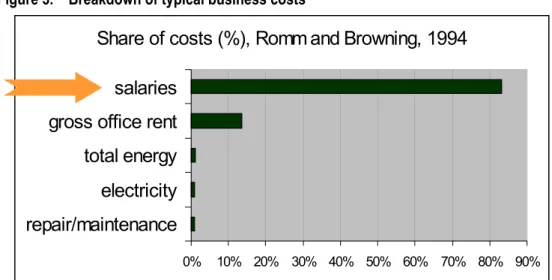
NEW TECHNOLOGIES FOR SMART BUILDINGS
- Sensor Technologies
- Wireless Sensor Networks
- New Materials Technologies
- Robotics
- Information and Communications Technologies
- Biometrics
- Integrated Systems
Fiber optic sensors are based on a 'Fiber Bragg Grating', an embedded grating in an optical fiber that can influence the properties of the light sent through it. In principle, the optical signal in fiber optic sensors can be modulated by the change in physical properties and geometry of the grating, which is directly or indirectly related to the variation in its environment. The cost of installing wires for sensors in buildings can be 50-90% of the cost of the sensors.
If such adaptive materials were cheap enough in the future, there is no reason why every surface inside a building could not be an 'active' element of the building. There are a number of key trends and new aspects of ICT used in office buildings to consider. Many of the new and existing technologies that have been described have the potential to be integrated in such a way as to make the functions of a building "smarter".
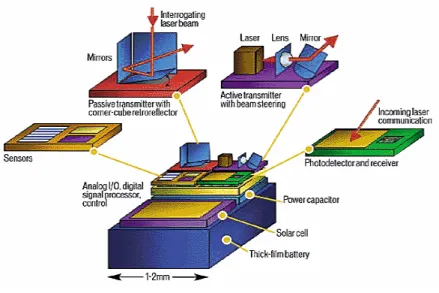
OPPORTUNITY AREAS FOR NEW TECHNOLOGY IN OFFICE BUILDINGS
- Thermal Comfort and HVAC Control Systems
- Air Balancing for HVAC Systems
- New Generation Sensors for HVAC System Control
- Air Quality – Indoor Pollutants
- Lighting
- Information and Communications Systems
- Energy Management and Reporting
There is a perception that these systems are flexible in that they can vary the air quantity or the temperature of the air supplied to the spaces within wide bands. One of the reasons why this issue is poorly understood and managed is that building managers cannot 'see' the problem. The quality also depends on the type, location and number of lights and the optical properties of the interior surfaces.
1988) showed that there may be a connection between the 'flickering' of lighting and the occurrence of headaches and eye strain. The stakeholders outlined in section 5.7 currently have 'information overload' – the wrong kind of information. There is an opportunity to use better ICT to integrate the data flow from the different systems.
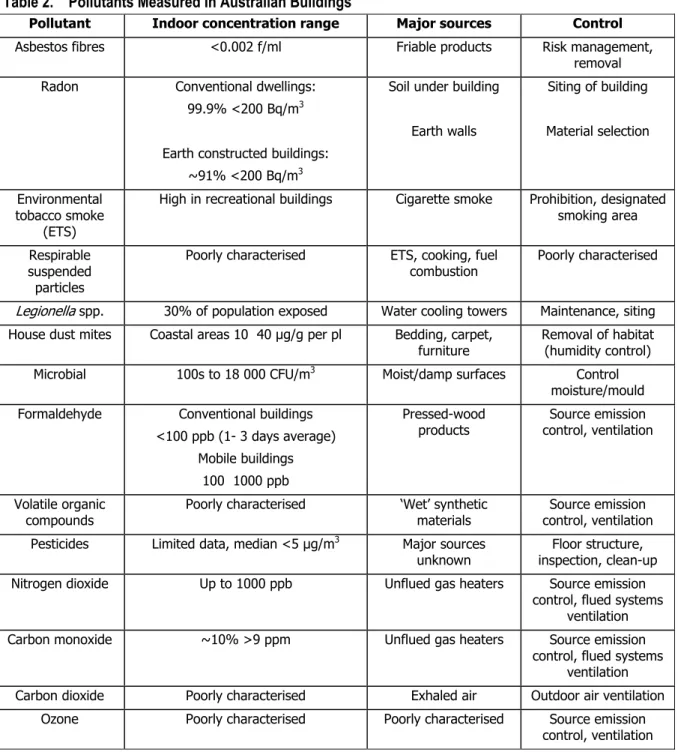
CURRENT SMART BUILDING RESEARCH
Intelligent Workplace at Carnegie Mellon University
Increased floor-based connectivity for reconfiguration of furniture Provides social environment ● Daily and seasonal dynamic components for Team. Distributed sensors and controls for electrical lighting interface Divide task and ambient lighting ● Ambient lighting with individually dimmable ballasts,.
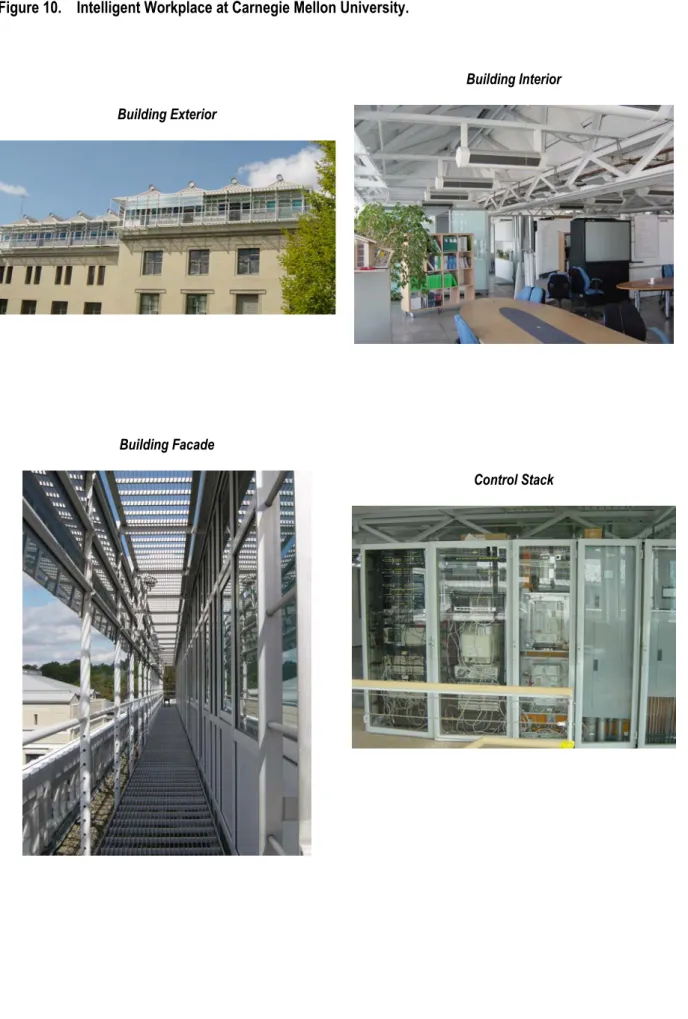
Other Research
¾ Operable windows and thermal comfort -- The purpose of this project is to determine how the use of operable windows in office settings affects workers' thermal comfort and their acceptance of variable thermal environments. ¾ The impact of ventilation on work performance -- The objective is to evaluate the impact of ventilation on worker productivity, energy consumption and indoor air quality. ¾ Changing Places Projects (MIT Media Lab) – Portable tools for studying the workplace: this project studies existing workplace practices using sensors for device usage registration, identity recognition, position recognition, activity recognition and image processing.
¾ Programmable building – every light switch, socket, doorknob and thermostat is an internet controllable on the internet - MIT Media Lab.
SUMMARY OF NEEDS AND OPPORTUNITIES
Technologies
However, many of the new technologies (eg 3G mobile networks, 'bluetooth') are ultimately dependent on the global market for these products to determine their uptake and success. Development and uptake by building users of such technologies is likely to be driven by other possible end-user applications (i.e. entertainment) – and will be independent of any aspect of the buildings they are used as part of. The key opportunities for the use of ICT in the smart and healthy building arise from integration of existing, widely used networks and protocols (such as IP) with other building system networks, and also in the development of web-based building information management systems for the various stakeholders, delivered in real time.
Robotics is a mature and viable technology, but is not really generic enough to be used in a smart building prototype. Robotics could be used where there is a specific application (eg vacuuming or photocopying), but these require specialist development, independent of the 'smart building' itself. The use of these technologies must be balanced against the needs of the individual organizations occupying the buildings, considering the consequences of security breaches and the costs of more traditional (and less convenient) security systems.
Application Areas
Section 7.1 found that significant improvements in HVAC system performance and efficiency would be possible if it were cheap enough to measure more IEQ parameters (air flow, temperature, humidity and light levels) at high granularity throughout the building . By deploying many inexpensive air flow sensors in the ductwork, the HVAC system can be continuously kept in balance, allowing the desired amount of air to be accurately delivered to specific locations in the building. Another advantage of using a large number of sensors in HVAC system control is that the same data can be used for more advanced energy consumption monitoring and reporting.
For the first time, HVAC power can be distributed to individual zones or groups of users in the building. If the same sensors used for the HVAC system are used to measure illuminance at a high resolution, then the use of daylight can be maximized, while maintaining an even illuminance throughout the building. This will result in significant energy savings, as lighting accounts for around 25% of a building's operational energy use, and can also reduce any unnecessary heating load the HVAC system has to deal with.
RECOMMENDATION FOR PROTOTYPE
PROTOTYPE FEATURES AND SPECIFICATION
System Description and Features
Hardware requirements
A more detailed proposal and costing for the prototype system is given in the Appendix of this report.
1997), BACnet: A Standard Communication Infrastructure for Intelligent Buildings, Automation in Building Office Tenant Needs Study, Center for the Built Environment, University of California, Berkeley. 1997), An Integrated Approach to Intelligent Building Design and Engineering – The Carnegie Mellon University Intelligent Workplace, Building Automation An Epidemic of Pneumococcal Disease in an Overcrowded, Inadequately Ventilated Prison, New England Journal of Medicine Impact of the Energy Efficient Office Lighting Strategies for Employee Satisfaction and Productivity, Environment and Behavior Design and Evaluation of Advanced Fuzzy Logic Controllers for Building Occupants Thermal-Visual Comfort and Indoor Air Quality Satisfaction, Energy and Buildings Addressing of energy-related challenges for the US building sector: Energy Futures Study, Energy Policy Assessment of Lighting Performance in Office Buildings with Daylighting Controls, Energy Saving Potential and Building Systems flexible and adaptive HVAC distribution for office buildings, Institute of Air Conditioning and Refrigeration Technology. 2000), Sick leave risk associated with outdoor air supply rate, humidification and occupant complaints, Indoor Air.
Technology Review Magazine, Massachusetts Institute of Technology, Cambridge, MA, July/August A study of indoor carbon dioxide levels and absenteeism among office workers, Environ Health Glob Access Sci Source, 1(1), P3. 1995), The Effectiveness of Vaccination Against Influenza in Healthy Working Adults, New England Journal of Medicine. The effect of air temperature on labor productivity in call centers – a case study. 1993), respiratory disease among military personnel in Saudi Arabia during Operation Desert Shield, American Journal of Public Health. 1(994), Greening the Building and the Bottom Line, Rocky Mountain Institute, Old Snowmass, USA. 1999), Association of ventilation rates and CO2 concentrations with health and other responses in commercial and institutional buildings, indoor air.
AUTHOR BIOGRAPHIES
Present the project objectives and progress to date, including the results of state-of-the-art and state-of-practice reviews, to project participants and representatives of interested parties; and. This report presents the process used in the facilitated session and the results in the form of mind maps. Who are the key stakeholder groups in the supply, use/operation and management of office buildings.
What are the key drivers in the provision, use/operation and management of sustainable and healthy workplaces. The participants' contributions and ideas are summarized in the following mind maps (presented in the order of the questions above). Pollutant levels can be controlled by increasing ventilation rates, using filters, implementing zoned HVAC design, or eliminating the source of pollutants.
People and activity tracking can be used to collect data on how each workplace 'works' - this can then be harvested to improve working practices and office design and layout. Office layouts can be changed instantly to suit daily activities – all systems are optimally reconfigured for comfort and efficiency – sound insulation and visual privacy can be changed, open and private zones can be created.
